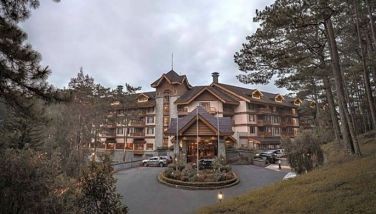Exotic bamboos now thrive on Mt Makiling
October 17, 2004 | 12:00am
If you enjoy being in a bamboo grove, go see the bambusetum on Mt. Makiling.
The Los Baños Bambusetum now nurtures 40 bamboo species obtained through local and international exchange with research institutions, botanic gardens, and even private collectors.
Some of the species came from China, Indonesia, Japan, Thailand, Bangladesh, Australia, Colombia, and the United States.
Initial species came from local sources.
The five-hectare bamboo gene bank is a product of painstaking R&D efforts over the years of the Department of Environment and Natural Resources-Ecosystems Research and Development Bureau (DENR-ERDB).
The bambusetum was established at the ERDB-Los Baños Experiment Station (LBES) in 1990 through the ERDB/DENR-FAO/UNDP Bamboo Research Project supported by the United Nations-Food and Agriculture Organization and United Nations Development Program.
ERDB bamboo taxonomist Cristina Roxas said the bambusetum was established "to collect, conserve, and propagate all bamboo species in the country as well as abroad. it also serves as a center for bamboo genetic resource exchange, information extension, and source of planting materials."
Director Celso P. Diaz also encouraged other interested groups or individuals to set up additional bamboo gene banks in the country to attain a long-term success of enhancing the biodiversity of this important plant species, which is regarded as the "tallest grass" in the world.
Other bambusetum so far established through ERDB and DENR support are those in Malaybalay (Bukidnon), Nabunturan (Davao), Iloilo, Aklan, Antipolo (Rizal), and Dasul (Pangasinan). — RAF
The Los Baños Bambusetum now nurtures 40 bamboo species obtained through local and international exchange with research institutions, botanic gardens, and even private collectors.
Some of the species came from China, Indonesia, Japan, Thailand, Bangladesh, Australia, Colombia, and the United States.
Initial species came from local sources.
The five-hectare bamboo gene bank is a product of painstaking R&D efforts over the years of the Department of Environment and Natural Resources-Ecosystems Research and Development Bureau (DENR-ERDB).
The bambusetum was established at the ERDB-Los Baños Experiment Station (LBES) in 1990 through the ERDB/DENR-FAO/UNDP Bamboo Research Project supported by the United Nations-Food and Agriculture Organization and United Nations Development Program.
ERDB bamboo taxonomist Cristina Roxas said the bambusetum was established "to collect, conserve, and propagate all bamboo species in the country as well as abroad. it also serves as a center for bamboo genetic resource exchange, information extension, and source of planting materials."
Director Celso P. Diaz also encouraged other interested groups or individuals to set up additional bamboo gene banks in the country to attain a long-term success of enhancing the biodiversity of this important plant species, which is regarded as the "tallest grass" in the world.
Other bambusetum so far established through ERDB and DENR support are those in Malaybalay (Bukidnon), Nabunturan (Davao), Iloilo, Aklan, Antipolo (Rizal), and Dasul (Pangasinan). — RAF
BrandSpace Articles
<
>
- Latest
Latest
Latest
May 14, 2024 - 3:43pm
By Ian Laqui | May 14, 2024 - 3:43pm
April 10, 2024 - 5:12pm
By Ian Laqui | April 10, 2024 - 5:12pm
March 4, 2024 - 3:32pm
By Ian Laqui | March 4, 2024 - 3:32pm
March 4, 2024 - 2:12pm
By Kristine Daguno-Bersamina | March 4, 2024 - 2:12pm
February 17, 2024 - 2:31pm
February 17, 2024 - 2:31pm
Recommended




























